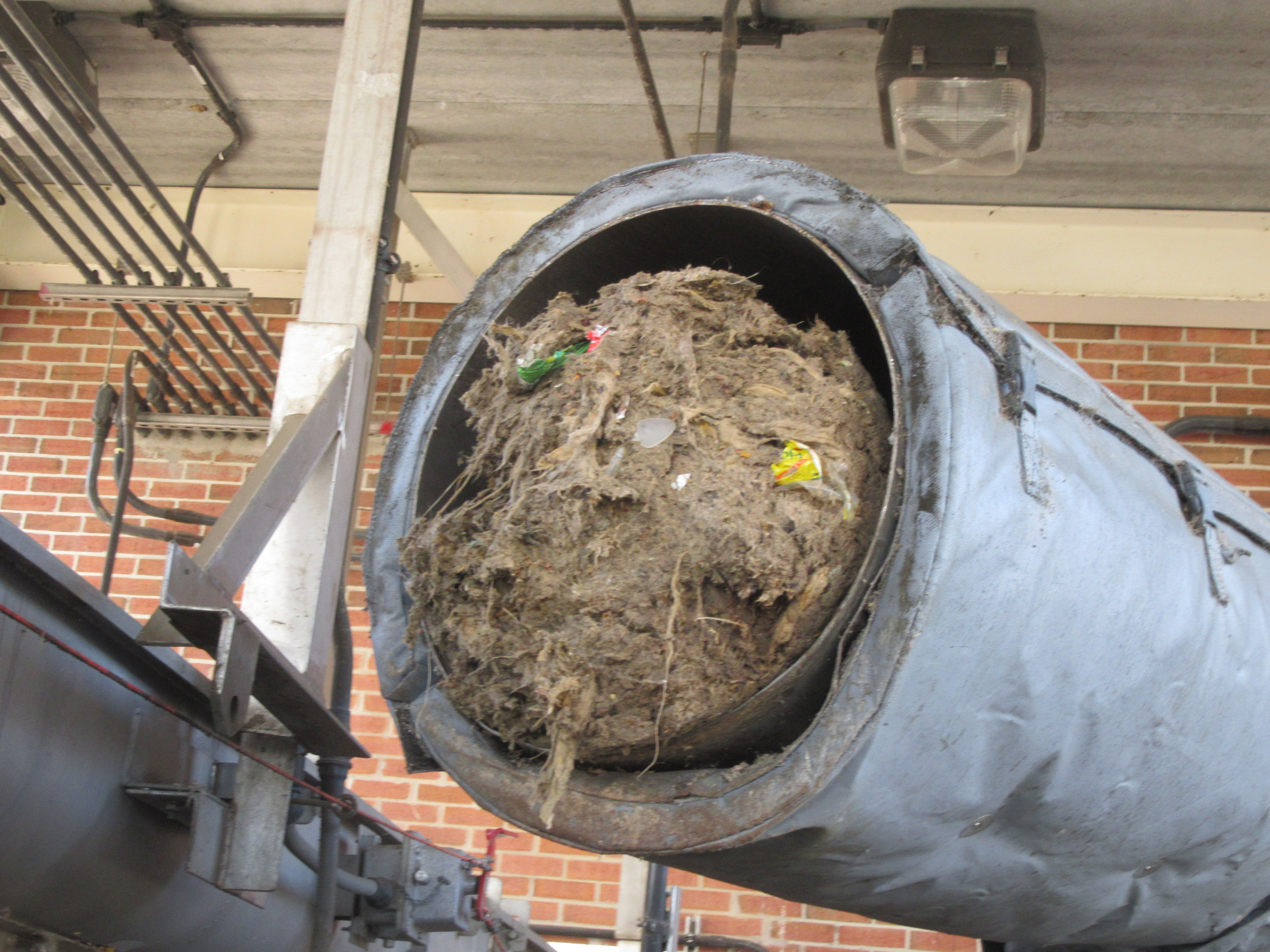When Rob Hartwell was growing up on Mason Neck in the 1960s, “The waterfront was my playground. I could write my name in the algae with a stick,” he told the 80 attendees at a June 28 gala celebrating George Mason University scientists’ research at the Potomac Environmental Research and Education Center (PEREC) on Belmont Bay.
PEREC, which opened in 2017, has 11 professors and around 40 students with expertise in chemistry, ecology, geology, environmental science and education who conduct basic and applied research on aquatic habitats from the river’s headwater streams to the Chesapeake Bay.

Daniela and Rob Hartwell and Hillary Clawson, president of the Friends of Mason Neck State Park
Dr. Chris Jones, Director, explained that since 1984, PEREC has monitored the water quality in Gunston Cove, downriver from the Noman M. Cole Pollution Control Plant, in cooperation with Fairfax County, to determine how wastewater plant effluent affects the cove’s waters.
The Board of Supervisors’ development decisions and resulting dense development patterns are major contributors to polluted runoff. The center’s studies show that phosphorus removal has helped increase submerged aquatic vegetation which improves water quality and provides habitat for fish and their prey. The increased submerged aquatic vegetation is linked to a rise in banded killifish and sunfish and the overall fish population diversity has increased. “It shows what can be achieved if you put your mind to it,” Jones said.
Using acoustic telemetry, Reid Nelson conducts fish ecology studies. River herring and striped bass have dramatically declined in the Potomac, he noted. He is also examining how long-lasting, polyfluoroalkyl substances (PFAS) affect fish, and has found PFAS in two native aquatic plant species.
Nelson highlighted snakehead fish which are native to Asia. Many invasive species are problematic because they outcompete native species, disrupt native biological communities and degrade ecosystems. In 2002, news of a snakehead in a Crofton, Maryland, pond popped up. State scientists have documented them in the Potomac and its tributaries since 2004. In those years, tall tales viralized online, alleging that snakeheads could attack people, devour pets and walk on land. “They can breathe air,” Nelson said. On their impact, he said, “White perch and banded killifish are increasing. The system has not collapsed.”
PEREC scientists have also analyzed how wastewater treated at Alexandria Renew affects Hunting Creek, a Potomac tributary between Fairfax County and Alexandria. Their work “shows what happens when you lose SAV quickly. It changes the ecosystem. The SAV is not coming back,” explained Jones.
Scientists with PEREC’s Algal Ecology Lab study toxic benthic cyanobacterial blooms in the Shenandoah River. Authorities closed 53 miles of the river in 2021 because of harmful algal blooms.
Ph.D. student Alexis Berger studies bacteria, which influence all other trophic levels, she said. “PEREC made me a better scientist,” she commented. “It is really a special environment here where all come together.”
Attendee Tom Blackburn, McLean resident, remarked, “I have kayaked on the Potomac for more than 20 years and I've guided kayak trips out of Mason Neck State Park for ten. I pay a lot of attention to the changes in the river and the wildlife that rely on it. PEREC's research is critically important because it enables us to understand what is needed to improve the river’s health.” He is a member of the Board of Directors, Friends of Mason Neck State Park.
The celebration ended with a champagne toast. “We can never go back,” Hartwell told the crowd.
The River’s Problems
In 1965, President Lyndon B. Johnson called the Potomac “a national disgrace, … a river of decaying sewage and rotten algae.” Since enactment of the 1972 Clean Water Act, some pollution has declined, mainly from what are called “point sources” -- factories, sewage treatment plants and farms.
What is the river’s biggest challenge today? Jones contends that water clarity in places has worsened. He cites Hunting Creek as an example, because the submerged aquatic vegetation has vanished. He also laments invasive fish, like snakeheads and blue catfish that can outcompete and eat native fish.
The Potomac River is the drinking water source for over five million Wasington-area people. Gala attendee Michael Nardolilli, Executive Director of the Interstate Commission on the Potomac River Basin (ICPRB), offered this view: “We need back-up storage for drinking water. Arlington and Washington, D.C., are the most vulnerable. They have one source of water, the Potomac, and one day of backup.” He is pursuing several options, including a new reservoir in Potomac, Md.
Polluted stormwater runoff is the only growing source of pollution to the river, reports the Potomac Conservancy, an organization that gave the river a B grade in 2023, up from a B- in 2022 and a D in 2011.
The Potomac Riverkeeper strives to make the river safe for swimming. See https://www.potomacriverkeepernetwork.org/ and https://www.potomacriver.org/2012/facts-a-faqs/safe-to-swim.
Information: https://perec.science.gmu.edu/ and https://www.potomacriver.org/potomac-basin-facts/

